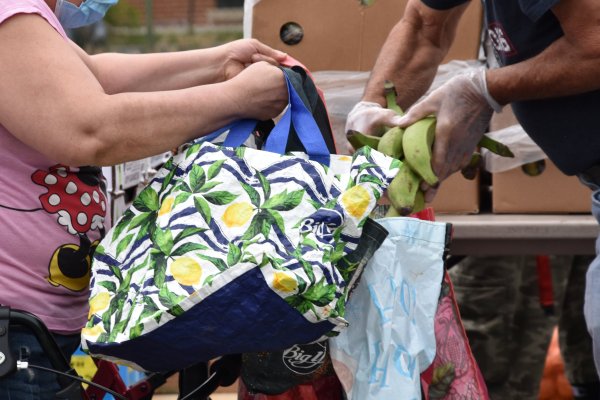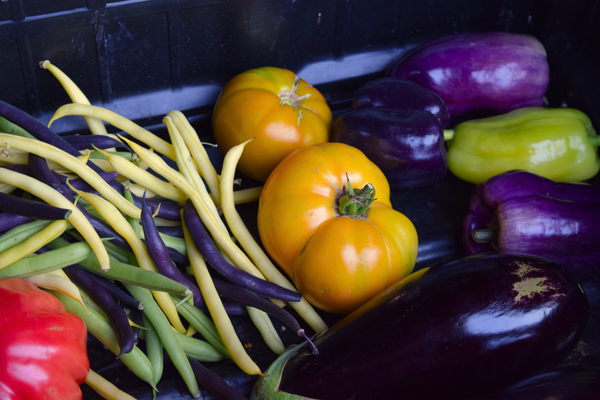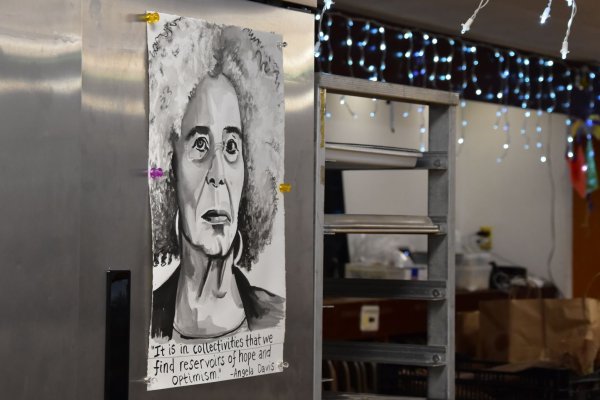Defining Food Insecurity and Hunger
Food Security & Insecurity
Food Security is an official definition from the U.S. Department of Agriculture (USDA)—”the ready availability of nutritionally adequate and safe foods.”
By contrast, food insecurity describes when people don’t have enough food to eat and/or don’t know where their next meal will come from.
Hunger
While everyone occasionally feels ‘hungry,’ in our context hunger describes a condition similar to the USDA’s definition of very low food security; an uncertainty of how and where to access enough nutritious food to live a healthy life.
The Food Bank uses both hunger and food insecurity in different contexts.
We generally use the term food insecurity in relation to measurable data because it is the language used in studies such as Feeding America’s Mapping the Meal Gap study.
We use hunger because people experiencing food insecurity often use it to describe their own experience of chronic hunger.

The Drivers of Hunger
Why is hunger so prevalent in the US? Feeding America, the national network of food banks, has identified 5 main drivers of hunger.

Nutrition and Hunger
Nutritious food is often more expensive and less physically accessible than cheaper, more processed options that negatively impact people’s health.

Community Stories
Stigma has had a profound impact on narratives about hunger and the people who experience it. These stories show a different perspective.
How Food Assistance Moves Through Western Massachusetts

Private Food and Fund Donors
Individuals, farms, retailers, wholesalers, & corporate sponsors.
Federal & State Food Suppliers
MEFAP (Massachusetts Emergency Food Assistance Program) & USDA/TEFAP (The Emergency Food Assistance Program).

The Food Bank
The region’s food warehouse, resource, education & advocacy center.
- Food operations: receive, store, & distribute food
- Programs: SNAP enrollment, nutrition education, Food Assistance Navigation, & advocacy
- Volunteers: food sorting and events
- Communications & fundraising

Food Assistance Network
Nearly 200 partner food pantries, meal programs, & shelters.
Direct Distributions

Individuals and Families in Western Massachusetts
Berkshire, Franklin, Hampden, & Hampshire Counties.
On the Rise
Hunger in Western Massachusetts
Food insecurity is on the rise, and the Food Bank is currently serving more people each month than during the height Covid-19 pandemic. But why? It is in part due to the increasing costs of groceries, transportation, and housing— and the ripple effects are being seen across the state.
Our Impact on Food Insecurity
The food we provide plays a crucial role in addressing food insecurity. The Food Bank also has an impact in less quantifiable ways, tackling the drivers of food insecurity.
Meals Provided
Every Month
The Food Bank provides the equivalent of more then one million meals every month, and a total of 14,696,589 meals in 2024.
Food Bank
Members
The Food Bank partners with frontline member food pantries, meal sites, and shelters across Western Massachusetts.
People Assisted
Every Month
The Food Bank serves families and individuals across Berkshire, Franklin, Hampden, and Hampshire counties.
The Food Bank Farms
In 1992 the Food Bank of Western Massachusetts became the first Food Bank in the country to purchase its own farm. In 2020, we became the first Food Bank to have purchased two.
Both in Hadley, our Food Bank Farms are largely cultivated by local farmers. The arrangement benefits Food Bank, our farm partners, and supports the long-term preservation of local agriculture.
Our farm project also includes Cultivating for Community, the Food Bank operated regenerative farming and education initiative on our second farm.

Our quarterly Word of Mouth Newsletter (WOM) keeps supporters informed and engaged in our work. It features updates on the organization’s initiatives, stories of impact, and ways individuals can contribute to addressing food insecurity in the community.

